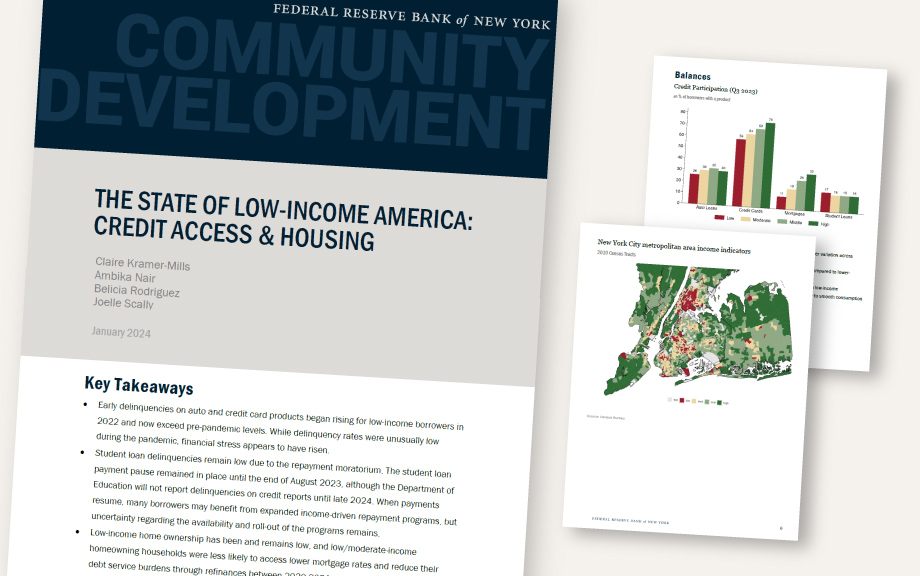
As part of our mission to make the U.S. economy stronger and the financial system more stable for all segments of society, the New York Fed issues periodic reports on credit access for low-income Americans in a series called “The State of Low-Income America.”
The January 2024 report, “The State of Low-Income America: Credit Access & Housing,” examines low-income households’ access to credit, ability to repay loans, and use of mortgage refinancing through Q3 of 2023.
Two earlier reports, both called “The State of Low-Income America: Credit Access & Debt Payment,” were published in November 2020 andk March 2022.
Among the key findings of the 2024 report:
- Early delinquencies on auto and credit card products began rising for low-income borrowers in 2022, and, as of Q3 2023, exceeded pre-pandemic levels.
- Low- and moderate-income homeowners were less likely than other homeowners to access lower mortgage rates through refinancing between 2020-2021. Only 24 percent of mortgages in low-income areas were refinanced, compared to 42 percent of mortgages in high-income areas.
- In low-income areas, 57 percent of households are rent burdened, compared to 44 percent of households in high-income areas. Households are defined as “rent burdened” if they pay more than 30 percent of their monthly income on rent.
- Student loan delinquencies remain low due to the repayment moratorium, which remained in place until the end of August 2023. Many borrowers may benefit from expanded income-driven repayment programs. Past-due student loan payments will not be reported on credit reports until the end of 2024.
- Credit card balances are higher for all groups than they were before the pandemic. Only 59 percent of people in low-income neighborhoods have credit cards.
The primary data source for these reports is the New York Fed’s Consumer Credit Panel, which is derived from anonymized Equifax credit data. Importantly, credit reports do provide information on income. For this, the authors use geographic information on the borrowers’ 2010 census tracts and merge it with income data from the 2016 Census Bureau American Community Survey.










